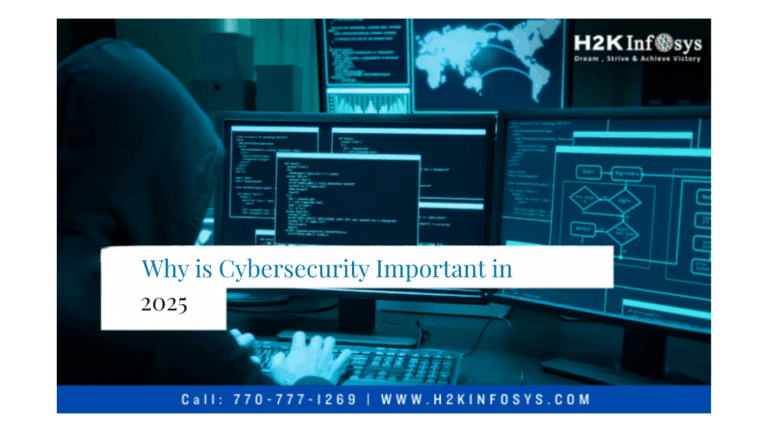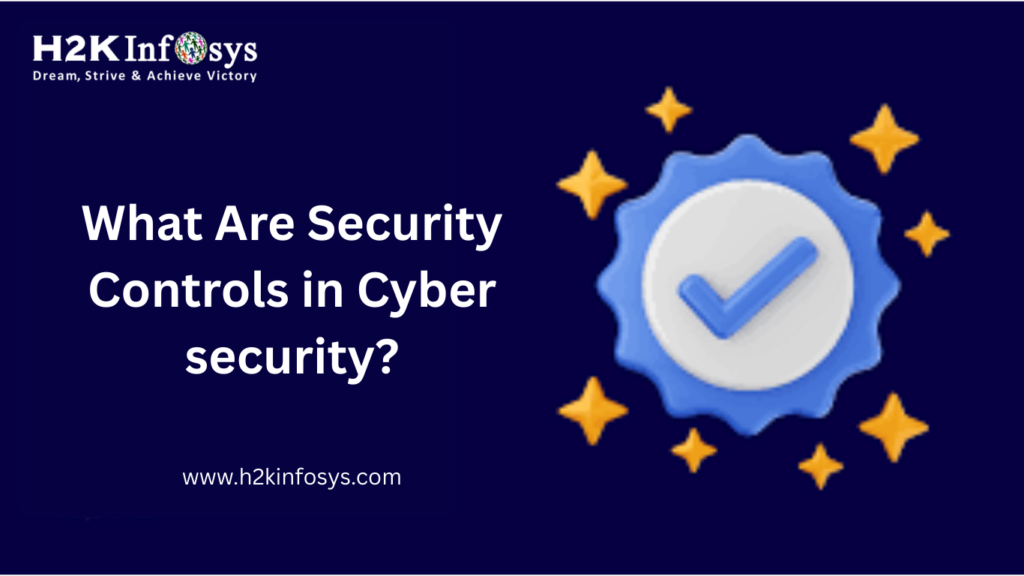Introduction: Why Cybersecurity Is Non-Negotiable in 2025
In our hyperconnected world, Cybersecurity Important in 2025 and has moved beyond corporate firewalls and IT teams. It now affects every individual, business, and nation. From personal data to national security systems, everything is vulnerable to cyber threats if not properly secured.
Digital transformation, AI, IoT, and remote work trends have expanded the cyberattack surface like never before. The consequences of data breaches, ransomware attacks, and identity theft are more severe and more frequent. This is why Cyber security training programs are in high demand.
Understanding why cybersecurity is important in 2025 not only prepares professionals for the evolving threat landscape but also offers strong career growth in a booming industry.
Why is Cybersecurity Important in 2025?
1. Exponential Growth of Digital Data
By 2025, it is estimated that over 175 zettabytes of data will be generated globally. That data, personal, financial, and medical, needs protection from unauthorized access, leaks, and malicious use. This makes Cybersecurity Important in 2025 across all sectors.
2. AI-Powered Attacks and Defense
Cybercriminals are now leveraging artificial intelligence to automate attacks and uncover system vulnerabilities faster than ever before. To counter these intelligent threats, organizations must adopt AI-driven defense strategies, making Cybersecurity Important in 2025 for proactive threat mitigation.
3. Remote Work and BYOD Risks
With hybrid work becoming the norm, employees often use personal devices to access sensitive business data. This introduces vulnerabilities if those devices lack enterprise-grade security. Securing distributed workforces makes Cybersecurity Important in 2025 for operational continuity.
Real Incidents Proving Cybersecurity’s Critical Role
Let’s explore real-life events that demonstrate why Cybersecurity Important in 2025 is not just theory:
- Colonial Pipeline Attack: This 2021 ransomware attack caused fuel shortages across the U.S., and its impact continues to influence cybersecurity strategies into 2025.
- Healthcare System Breaches: Over 40 million patient records were compromised in the past two years due to poor data protection in hospitals.
- Phishing Attacks on Remote Workers: Remote employees have become prime targets, with social engineering attacks increasing by over 75% year-over-year.
These scenarios show that cyber security course and job placement training aren’t optional, it’s essential.
Why Cybersecurity Jobs Are in High Demand in 2025
1. Global Shortage of Cybersecurity Professionals
A recent industry report shows that nearly 3.4 million cybersecurity roles are currently unfilled globally. This shortage makes Cybersecurity Important in 2025 as businesses rush to secure digital systems and build internal security teams.
2. High-Paying Roles with Long-Term Growth
Cybersecurity professionals can expect lucrative salaries and career progression. For example:
- Entry-Level Analyst: $70,000–$90,000/year
- Security Architect: $120,000–$160,000/year
- CISO: $180,000+/year
Whether you’re a graduate or a working professional, enrolling in a Cyber security course with placement is a smart move.
Major Domains Where Cybersecurity Will Be Crucial in 2025
To truly understand why cybersecurity is important in 2025, let’s explore the primary areas where cybersecurity will play a vital role:
1. Smart Cities and IoT
With millions of connected sensors in transportation, public services, and energy systems, smart cities are vulnerable to cyber sabotage. This makes Cybersecurity Important in 2025 for urban safety and data privacy.
2. Financial Sector
Banks, fintech platforms, and crypto exchanges continue to be top targets for hackers. Securing digital wallets, transactions, and user identities is why cyber security training and placement are mandatory for this sector.
3. Healthcare and Medical Devices
From online health records to wearable devices, patient data must remain secure. The growing use of digital health tools has made Cybersecurity Important in 2025 in protecting both data and lives.
Hands-On Skills Covered in Cybersecurity Training
An effective cyber security training course not only teaches theory but builds practical, in-demand skills that show Cybersecurity Important in 2025 on a real-world level. Here’s what learners typically master:
- Network and firewall configuration
- Ethical hacking and penetration testing
- Threat intelligence and vulnerability assessments
- Security Incident & Event Management (SIEM)
- Cloud security protocols
- Compliance with GDPR, HIPAA, and ISO standards
These skills are vital to secure roles like SOC Analyst, Security Engineer, and Cybersecurity Consultant.
How to Start Your Cybersecurity Career in 2025: A Step-by-Step Guide
Step 1: Understand Why Cybersecurity Is Important in 2025
Read case studies, follow cybersecurity trends, and understand the real impact of breaches.
Step 2: Enroll in Cyber Security Training Courses
Choose programs that offer hands-on labs, current tools, and cyber security course and job placement options.
Step 3: Earn Certifications
Popular ones include CompTIA Security+, CEH, CISSP, and Microsoft Security Certifications.
Step 4: Build a Portfolio
Complete mini-projects, contribute to open-source tools, and participate in capture-the-flag competitions.
Step 5: Leverage Placement Support
Look for cyber security training and placement programs like those at H2K Infosys to get job-ready.
Cybersecurity Training Near Me vs Online Learning
If you’re searching for cyber security training near me, you’re not limited to local options anymore. Remote learning from H2K Infosys allows you to:
- Attend live classes with instructors
- Access 24/7 LMS content and labs
- Practice with real-world simulation tools
- Get one-on-one career coaching
Online learning has made Cybersecurity Important in 2025 more accessible, scalable, and relevant than ever.
Cybersecurity Trends That Make It Critical in 2025
Understanding why cybersecurity is important in 2025 includes tracking emerging trends:
1. Zero Trust Models
Every access request is verified; no user is trusted by default.
2. Cybersecurity Mesh Architecture
Security is no longer centralized; instead, it is distributed across systems, networks, and devices.
3. Rise in Deepfakes and Social Engineering
Fake identities and phishing attacks are becoming more convincing, especially with AI tools.
4. Increased Regulation
Governments are tightening compliance requirements, making trained professionals essential.
These trends underline why Cybersecurity Important in 2025 isn’t just a concern for corporations but for individuals, small businesses, and public entities.
Why H2K Infosys Is the Right Choice for Cybersecurity in 2025
At H2K Infosys, we’ve crafted a powerful, job-focused cyber security training and placement program tailored for 2025’s challenges.
Key Features:
- Live, instructor-led training by experienced professionals
- Hands-on labs for practical exposure
- Interview preparation and resume assistance
- Placement support with top IT companies
- Lifetime access to course recordings
Our curriculum is constantly updated to reflect why Cybersecurity Important in 2025 is an important industry demand.
Key Takeaways:
- Cybersecurity Important in 2025 because cyber threats are more sophisticated, AI-driven, and damaging than ever before.
- The global cybersecurity job market is expanding rapidly, with millions of unfilled roles.
- Cyber security training courses offer practical skills and certification prep to enter the field confidently.
- H2K Infosys provides industry-relevant, placement-focused cybersecurity training to launch your career.
- The growing use of digital health, smart cities, cloud systems, and financial tech makes Cybersecurity Important in 2025 across industries.
Conclusion: Your Future in Cybersecurity Starts Today
Cybersecurity is not a trend it’s a necessity. As threats continue to grow, so do opportunities for skilled professionals. Make the smart move toward a secure, high-paying tech career.
Enroll now in H2K Infosys’ Cybersecurity training and placement program to become job-ready and future-proof your career in 2025.




























